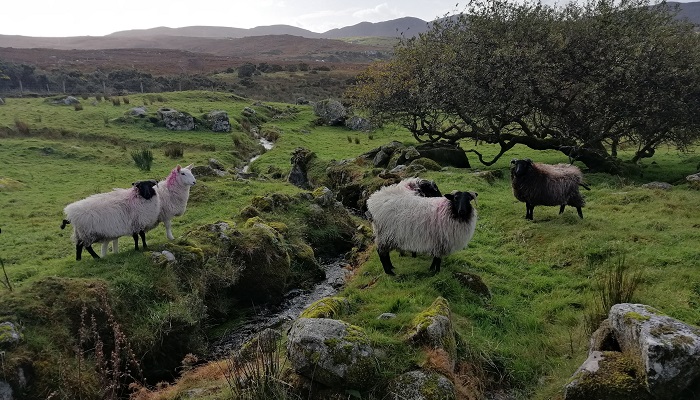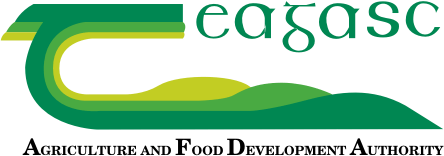16 February 2023
Improving returns in hill sheep with flock health and production planning

The concept of flock health planning is not new, however, the idea has had a variable history and opinion on how best to achieve widespread uptake remains divided. John Barley, AFBI Veterinary Science Division, told delegates at last night’s National Hill Sheep Conference.
Currently, interest is centred on the Great Britain Animal Health and Welfare Pathway and successful pilot schemes in England and Wales, which have seen the uptake of flock health and production planning through local veterinary practices. A similar project with more limited scope is the Northern Ireland Sheep Scab Project which is currently in progress.
Recent Department of Agriculture, Environment and Rural Affairs (DAERA) sponsored work undertaken by the Agri-Food and Biosciences Institute (AFBI) and AgriSearch between 2016 and the end of 2019 has demonstrated the effectiveness of proper flock health planning in improving flock health in both hill and lowland flocks in Northern Ireland.
Originally, flock health planning was very much focused on disease prevention and the production benefits of such plans were rarely highlighted. This thinking has now changed with the contribution of health planning to the improved financial position of the enterprise being seen as very important. Thus, the original concept has changed into one of health and production planning focused on better returns.
Furthermore, health planning is now seen as an essential part of the proactive approach necessary to comply with current EU and UK animal health and welfare strategies. Importantly, these health and welfare strategies are linked to food chain safety through the concept of Welfare Quality at UK and European level. Another important area in which there is a role for health and production planning is as a part of national and international Antimicrobial Resistance Strategies.
The basis of the planning process
There are many formats in which a flock health and production plan can be presented, varying from the very simple to the very complex. In general, plans at either end of the spectrum are of doubtful practical use in most flocks. All plans should be based around routine involvement with the flock, preferably through flock visits although with mature plans some review meetings can be held at practice premises.
Visits should be timed to match important events in the flock calendar because at these times decisions made will provide input into vital stages of the production cycle. Visits at weaning, pre-lambing and during lactation / rearing are most usual although financial constraints may cause the rearing and weaning visits to be combined.
The basis of the flock health and production planning process is best broken down as follows:
- Audit: Establish the baselines within the limitations of the flock recording system. This may well lead to specific actions related to better record keeping.
- Recording system: The establishment of fit for purpose recording systems is of vital importance and essential if the health and production benefits are to be analysed. A good example of the straightforward but effective records required has been produced by EBLEX as a part of the Better Returns Programme. Such records can be used in conjunction with trading accounts to calculate financial benefit.
- Objectives: Objectives equate to the identification of areas for intervention, these will vary from flock-to-flock. Examples of common objectives derived from the Northern Ireland project are: reduction of abortion and neonatal lamb losses; reduction of levels of lameness; reduction of anthelmintic use through adoption of Sustainable Control of Parasites in Sheep (SCOPS) principles; proper and effective treatment of sheep scab including the control of mites resistant to some common injectable treatments; reduction of levels of mastitis; reduction or removal of specific diseases from the flock (for example OPA, Johne’s Disease); and improvement of grassland management.
- Agreed Interventions: Interventions are agreed and put into place to meet the objectives. Often it is not possible to try to achieve all the objectives within the first year and plans work best if they are allowed to proceed in a stepwise manner.
- Review: Review is essential to monitor progress against objectives and assess the effectiveness of the interventions made. Review findings can be benchmarked against similar flocks if a network of plan users is established at either local or in some cases national level.
- Adjustments: Adjustments must be made on the basis of the review findings and may require modification of veterinary input and a change in the components of the plan (see below).
Components of the plan
Health and production plans should contain some or all of the components listed below, it is through the manipulation of these components that the interventions meet the objectives.
Preventive Medicine
This will include vaccination policy, use of anti-parasitics and the application of SCOPS principles, as well as any trace element supplementation identified as being required. Examples are given below.
- Vaccinations – clostridial disease, pasteurellosis, EAE, toxoplasma, foot rot, orf, louping ill;
- Anti-parasitics / SCOPS – gut worms, flukes, coccidia, scab, lice, ticks, flies;
- Trace elements and vitamins – copper, cobalt (Vitamin B12), selenium, vitamin E.
Routine treatments
The routine treatments incorporated into a flock health and production plan will vary from flock to flock depending on audit findings and diseases of most concern. Examples are given below:
- Young lamb treatments – colostrum supplementation, hypothermia and hypoglycaemia protocols;
- Lameness control programmes;
- Mastitis control;
- Quarantine treatments for all incoming stock.
Health monitoring
Laboratory input into flock health and production planning is very important. Diagnosis and identification of presence of disease is the basis of the setting of the objectives, the interventions decided upon and the design of the preventive medicine and routine treatment programmes. Examples are given below.
- Trace element profiling of ewes at weaning and lambs post weaning – copper, cobalt (Vitamin B12), selenium, vitamin E;
- Metabolic profiling of ewes pre-lambing – protein, energy, liver function, minerals;
- Abortion investigation – samples, lab submissions;
- Faecal egg count monitoring (gut worms and flukes) – lambs during the rearing period, ewes and rams pre-tupping, and away wintered sheep on return to flock.
Flock management
A full management component is optional for a health and production plan and often a better approach is to have separate plans drawn up by qualified flock management advisors and sheep technologists to cover such areas as: breeding and replacement policy; nutrition; grazing management; and marketing plan. However, the health and production plan should include written procedures for quarantine, general and specific biosecurity, culling policy and scanning.
The future for health and production planning
The costs of veterinary involvement in flock health and production planning are variable; however, under all circumstances, veterinary input will only be successful if production, financial and compliance benefits can be shown. The impact of health and production planning depends on the baseline situation, the success achieved in increasing output and the extra income derived from that output when compared to plan costs. It is clear that the profitability of the sheep industry is vital to the uptake of health and production planning. It is equally clear that the benefit will vary from flock to flock and will be influenced by outside factors which may affect losses in any one year. Fluctuations in the final market value of the increased production have also to be recognised. Veterinary input has to be measureable and accountable, plans have to be well constructed and provide value for money. In short, the plan has to work to the financial benefit of the sheep enterprise.
However, the requirement for compliance with the requirements of ‘welfare quality’ and its’ link to food chain safety is becoming increasing important to the industry. The ‘One Health’ approach to antimicrobial resistance is another important area in which health and production planning, in conjunction with responsible use guidelines (RUMA) will help with food chain safety compliance in the future.
In most of the UK, health and production planning has been taken up to some extent but is very far from being accepted by all vets and sheep farmers. Government-backed initiatives such as the Land Management Contract options used successfully in Scotland are an example of how well thoughtout pump priming can stimulate uptake. Another level of Government involvement has been demonstrated in England and Wales with the Animal Health and Welfare Pathway.
Take home messages:
- Flock health plans are important in all sheep farming systems;
- Plans should measure both health and production benefits;
- Flock health plans are ongoing and open-ended;
- Recent work in Northern Ireland has demonstrated the benefits of health plans.
